You are using an out of date browser. It may not display this or other websites correctly.
You should upgrade or use an alternative browser.
You should upgrade or use an alternative browser.
Vogue Italia April 2020 : A Blank Canvas by Ferdinando Verderi
- Thread starter vogue28
- Start date
Alien Sex Friend
Well-Known Member
- Joined
- Oct 26, 2005
- Messages
- 8,539
- Reaction score
- 1,324
UNA SIRENA A MANHATTAN
Artist: Lila Azam Zanganeh
Vogue Italia Digital Edition
emmm are they kiddin? thats steven klein old 2004 year work with karen elson for vogue italia, what has this particular artist done, same with rianne cover shot and eva mendez by steven meisel...
dontbeadrag
Well-Known Member
- Joined
- Mar 4, 2016
- Messages
- 1,648
- Reaction score
- 5,459
Everything is meh, but to be honest, despite all the hatred I find the ideas of sketches and homemade editorial good. Could not care less about the super pretentious artsy-fartsy images (e.g. Marcus Piggott, David Sims, etc.), but Bella, Lindsay, Suzanne and Gigi are good, interesting, not ugly and I love Suzanne's idea, you can tell it is fun and I would do the same if I were the bored stylist at home.
What is with reusing Steven Klein's editorial (edit: and the other two reused images)? I'd rather ask followers or young creatives to create editorials for VI, so many creative people have ideas to contribute, yet you dare to reuse something that you did not create and was in previous issues that Franca edited.
Absolutely repulsive to use something Franca created in your new Vogue, put some "artist" name and pretend that you came up with it. Utter disrespect, and I don't care that she doesn't own the copyright to those images.
What is with reusing Steven Klein's editorial (edit: and the other two reused images)? I'd rather ask followers or young creatives to create editorials for VI, so many creative people have ideas to contribute, yet you dare to reuse something that you did not create and was in previous issues that Franca edited.
Absolutely repulsive to use something Franca created in your new Vogue, put some "artist" name and pretend that you came up with it. Utter disrespect, and I don't care that she doesn't own the copyright to those images.
Zorka
Well-Known Member
- Joined
- Jan 29, 2014
- Messages
- 15,715
- Reaction score
- 12,103
Can someone explain what is Hitler's mask doing in here? Did I miss something?
The way I understand it - ESPECIALLY after reading the following article! - it requires looking at a bigger picture:
QUESTO NON È (SOLO) UN GIORNALE DI MODA
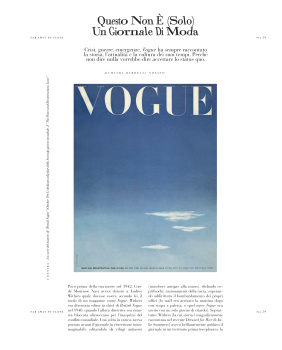
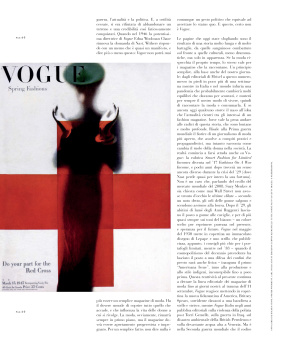
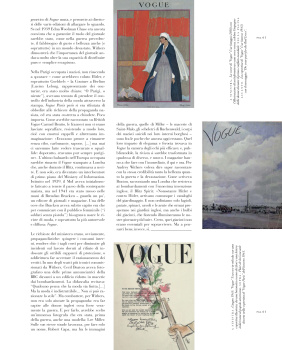
[Rough Google translation - please forgive my not so great English, let alone Italian language!]
THIS IS NOT (ONLY) A FASHION MAGAZINE
Crisis, wars, emergencies. Vogue has always told the history, current affairs and culture of its time. Because not saying anything would mean accepting the status quo.
Shortly before his death in 1942, Condé Montrose Nast had asked Audrey Withers what is, in her opinion, the role of a magazine like Vogue. Withers had become the British Vogue editor-in-chief in 1940, when the then director had remained trapped overseas due to the tightening of world conflict. Once in charge, she had carried on the newspaper in unimaginable straits: editing it from air raid shelters (gas masks in hand), challenging curfews, paper rationing, overcoming even the bombing of their own offices (the staff had arrived the next morning with broom and dustpan, and that month Vogue was released only one day late). Mostly, Withers (whose story is beautifully told in Julie Summers' recent Dressed for War) had brilliantly led the magazine in a previously unexplored territory: the war, current affairs and politics. And, to hostility cease, had refused to abandon a ground and credibility so painstakingly conquered. When in 1946 the most powerful editor of Vogue Edna Woolman Chase renews Nast's question, Withers replied with a memo that is almost a manifesto, and said more or less this: Vogue will never have to be a simple fashion magazine. It has the moral duty to cover all that happens, and what affects women's lives which have to be addressed. Fashion will obviously remain always on top, but the magazine will have to be openly progressive and committed. For one simple fact: saying nothing (as a political gesture) is equivalent to accepting the status quo. And Vogue, certainly, is not that.
The pages you are browsing today are the result of a very long and many history battles, from those bloody fought on the cultural front, less dramatic, but only in appearance. If fashion reflects your own time, the same goes for the magazines that tell it. A simple principle, also the basis of our magazine: from Meisel's editorials to this issue, set up in just over a week while in Italy and in the whole world rages pandemic that will likely change many balances we took for granted, and it will change forever our way of life, therefore to tell about fashion and consume it. What if even today someone is turning up their noses at the idea that actuality falls within the interests of a fashion magazine, maybe it's worth going to the roots of this story, which are far away and very deep. It dates back to the First War flourishing of fashion journalism worldwide, which practically performed tasks and propaganda, but meanwhile telling how it's changing the role of women in society. There reality begins to make its way on Vogue too: the Smart Fashion for Limited section Incomes becomes in 17 Fashions On A War Income, and a few years later it will make sense still different during the crisis of '29 (where Nast almost completely loses his luck). It is no coincidence that, speaking of the collapse of the world market of 2008, Suzy Menkes asked why Wall Street didn't keep an eye on the latest fashion shows because of the skirt length (hemline) theory. [According to the theory, if short skirts are growing in popularity, it means the markets are going to go up. If longer skirt lengths are gaining traction in the fashion world, it means the markets are heading down. The skirt length theory is also called the hemline indicator or the "bare knees, bull market" theory.] After '29, the Lamé dresses from the Roaring Years leave the place to ankle skirts, and moreover almost always in shades of white - a color chosen to express purity in the present, and hope for the future. Vogue in May from 1930 puts on the cover a immaculate Lepape's drawing and a scream that advertises, in fact, the most chic tips for wallets limited, while in '38 - when the cosmopolitanism of the previous decade has given way to a border defense that it will also be physical soon - inaugurates the first "Americana Issue", hymn to production to the indigenous style, inconceivable until recently before. This reactivity to the present continues to dictate the editorial line of the fashion magazines until today: the trauma of September 11, Vogue reacts by putting on the cover America's new sweetheart, Britney Spears smiling in front of a flag of stars and stripes while Vogue Italia over the years published editorials on police violence post Twin Towers, on the war in Iraq, on the British Petroleum environmental disaster and on the devastating high water in Venice. But it's in World War II that the Vogue made genetic changes, and allowed editors of the various editions to widen the look. In 1939 Edna Woolman Chase was still convinced that the main role of the magazine would have been, as in the previous war, the need for fashion and beauty, Withers demonstrated the importance of the magazine to go far beyond its ability to distribute pure and simple escapism. In occupied Paris the Nazis, failing to move - as Hitler would have liked, and especially Goebbels - Couture in Berlin (Lucien Lelong, representative of the couturiers, had been very clear: “Or Paris, or nothing ”), they had tried to take control of the fashion industry through the printing. Vogue Paris however had refused to obey the demands of Nazi propaganda, and had been forced to close. As he have been told by British Vogue columnist Carmel Benito, the French women weren't let to be overwhelm, resisting in their own way, with huge hats and as much imagination: «We were ready to stay without food, fuel, soap, [...] but never we would have looked neglected or shabby: after all, we were still Parisian». The last bulwark in occupied Europe, the Vogue printed in London, remained even during the Blitz, kept going on. And not only that, he had become an interlocutor of the Ministry of Information. Established in 1939, the MoI initially had struggled to keep up with the other Nazi party, but in 1941 he had been placed in the hands of Brendan Bracken - take a look, a newspaper and magazine editor. One of things Bracken had immediately realized was that to communicate with the female audience (“a soldiers without a gun"), a magazine had to be fashionable, and above all the most authoritative and widespread: the Vogue. The ministry's requests were, of course, propaganda: push domestic consumption, make short cuts chic to lessen accidents at work due to refusal to wear the horrible protective caps, or even have the rationing accepted clothes. In one of the most iconic shots commissioned from Withers, Cecil Beaton had photographed one of the first announcers of the BBC in front of a building reduced to rubble from the bombing. The caption said: "Someone thinks that fashion is over. [...] But fashion is indestructible ... It cannot be rationed style". But fight, with Withers, it wasn't just helping propaganda: it was far understand what British women really were war. And to do so, she would have chosen an immense photographer who had been before of the war, even a model: Lee Miller. On his own roads he worked, to do alone a name, Robert Capa, but among the images of war, those of Miller - the rubble of Saint-Malo, Buchenwald's skeletons, bodies of Nazi suicides in their bourgeois interior - they are among the few that still remain today. Their mixture of elegance and ferocity found in Vogue have been the most effective chamber of echoes: and, by publishing them, the magazine have turned into something different, and new. Magazines have to do with the immediate, the here and now. For Audrey Withers it meant knowing how to tell with the same credibility about a beauty as much as about war and devastation. How she wrote Beaton, telling a London that resisted bombing with yet another invention English, the Blitz Spirit: «Despite Hitler and against Hitler, the gardening catalogs still arrive. And we don't order just beans, potatoes, spinach, cabbage and the hives that now thrive in English gardens, but also hyacinths bulbs, which will bloom when arive a darker days». Of course, those hyacinths weren't essential for survival. But come to think of it if they, instead, were.
Vogue Italia Digital Edition
MON
Well-Known Member
- Joined
- Jun 20, 2009
- Messages
- 12,627
- Reaction score
- 5,179
So t*ts out, legs spread is appropriate for these times? hmm
That white cover is a gimmick. They want people talking about it because they're 100% sure that the ordinary SJW won't even bother picking up the issue to see the inconsistency of the cover and the content.
The content obviously shows one fact: Farneti was unprepared. He didn't have an issue prepared. I thought they had tons of images for the cover? These editorials feel like recycled rejected content.
That white cover is a gimmick. They want people talking about it because they're 100% sure that the ordinary SJW won't even bother picking up the issue to see the inconsistency of the cover and the content.
The content obviously shows one fact: Farneti was unprepared. He didn't have an issue prepared. I thought they had tons of images for the cover? These editorials feel like recycled rejected content.
Benn98
Well-Known Member
- Joined
- Aug 6, 2014
- Messages
- 42,532
- Reaction score
- 20,509
They keep translating from english some articles at the end of magazine?
Nope, entire issue is in Italian nowadays.
Phuel
Well-Known Member
- Joined
- Feb 18, 2010
- Messages
- 5,426
- Reaction score
- 7,480
Can someone explain what is Hitler's mask doing in here? Did I miss something?
It isn’t Hitler. It’s photographer Andrea Artemisio’s mask of himself (looking sad).
I don’t mind this ragtag feel and look of this sole story. (Vogue Germany did it better with the Juergen Teller story a few months ago). It is what it is and given Emanuele’s lack of creativity and in context of the pandemic, this story will likely resonate with a much wider readership than just the die-hard fashion fans. Much like the illustration-only gimmick issue, this issue will be praised by the masses/media as poignantly relevant. Sadly, this seems the (profitable) direction of Vogue Italia now.
(More than his gimmicks, I can’t tolerate the obnoxious art direction from page to page. It’s so try-hard indie/DIY and just comes off cheap and juvenile and an eyesore.)
GivenchyAddict
Well-Known Member
- Joined
- Feb 5, 2012
- Messages
- 1,968
- Reaction score
- 4,236
The main ed could be from Purple magazine. The rest is useless.
I prefer the less pretentious approach of I-D about the current situation. This is is way too try hard
I prefer the less pretentious approach of I-D about the current situation. This is is way too try hard
- Joined
- Jul 14, 2017
- Messages
- 14,339
- Reaction score
- 19,986
Honestly, it looks like any other Farneti issue of Vogue Italia. It's nowhere near cohesive, it's trying hard to be art and it's just plain ugly. There are two or three photographs I like from that main selection (can't even call it an editorial) and the illustrations aren't bad.
But I am confused with those archival reprints. Why is there only some ''artist'' credited? And what exactly did they do? IL VESTITO E LA RIVOLUZIONE is from Meisel's ''Sensory Overload'' cover story for February 2007 with Agyness and Hilary. Artwork, colors and production, all in their original form. The ''artist'' didn't even touch it. UNA NOTTE A CAPRI is from the fold-out of Sadli's cover with Rianne under Farneti. UNA SIRENA A MANHATTAN is March 2004, Karen Elson by Klein. Reprinted in it's original glory. No apparent ''art'' touch. IL BODY DEL REATO Eva Mendes by Meisel, May 2008 cover story. Same deal. The audacity to just ignore everyone involved in the production of the original images is disgusting and on top of that, to give credit to someone who contributed absolutely nothing... I'd like to know how this got approved. Embarrassing...
But I am confused with those archival reprints. Why is there only some ''artist'' credited? And what exactly did they do? IL VESTITO E LA RIVOLUZIONE is from Meisel's ''Sensory Overload'' cover story for February 2007 with Agyness and Hilary. Artwork, colors and production, all in their original form. The ''artist'' didn't even touch it. UNA NOTTE A CAPRI is from the fold-out of Sadli's cover with Rianne under Farneti. UNA SIRENA A MANHATTAN is March 2004, Karen Elson by Klein. Reprinted in it's original glory. No apparent ''art'' touch. IL BODY DEL REATO Eva Mendes by Meisel, May 2008 cover story. Same deal. The audacity to just ignore everyone involved in the production of the original images is disgusting and on top of that, to give credit to someone who contributed absolutely nothing... I'd like to know how this got approved. Embarrassing...
MON
Well-Known Member
- Joined
- Jun 20, 2009
- Messages
- 12,627
- Reaction score
- 5,179
Honestly, it looks like any other Farneti issue of Vogue Italia. It's nowhere near cohesive, it's trying hard to be art and it's just plain ugly. There are two or three photographs I like from that main selection (can't even call it an editorial) and the illustrations aren't bad.
But I am confused with those archival reprints. Why is there only some ''artist'' credited? And what exactly did they do? IL VESTITO E LA RIVOLUZIONE is from Meisel's ''Sensory Overload'' cover story for February 2007 with Agyness and Hilary. Artwork, colors and production, all in their original form. The ''artist'' didn't even touch it. UNA NOTTE A CAPRI is from the fold-out of Sadli's cover with Rianne under Farneti. UNA SIRENA A MANHATTAN is March 2004, Karen Elson by Klein. Reprinted in it's original glory. No apparent ''art'' touch. IL BODY DEL REATO Eva Mendes by Meisel, May 2008 cover story. Same deal. The audacity to just ignore everyone involved in the production of the original images is disgusting and on top of that, to give credit to someone who contributed absolutely nothing... I'd like to know how this got approved. Embarrassing...
Cite new names to make it look original. Trust me, he didn’t have an issue ready for publication. It shows. This was all done in last minute.
Benn98
Well-Known Member
- Joined
- Aug 6, 2014
- Messages
- 42,532
- Reaction score
- 20,509
Honestly, it looks like any other Farneti issue of Vogue Italia. It's nowhere near cohesive, it's trying hard to be art and it's just plain ugly. There are two or three photographs I like from that main selection (can't even call it an editorial) and the illustrations aren't bad.
But I am confused with those archival reprints. Why is there only some ''artist'' credited? And what exactly did they do? IL VESTITO E LA RIVOLUZIONE is from Meisel's ''Sensory Overload'' cover story for February 2007 with Agyness and Hilary. Artwork, colors and production, all in their original form. The ''artist'' didn't even touch it. UNA NOTTE A CAPRI is from the fold-out of Sadli's cover with Rianne under Farneti. UNA SIRENA A MANHATTAN is March 2004, Karen Elson by Klein. Reprinted in it's original glory. No apparent ''art'' touch. IL BODY DEL REATO Eva Mendes by Meisel, May 2008 cover story. Same deal. The audacity to just ignore everyone involved in the production of the original images is disgusting and on top of that, to give credit to someone who contributed absolutely nothing... I'd like to know how this got approved. Embarrassing...
There are no artists involved, must be a mistake. Those are all direct image reprints. I've combed through the issue again and all of the bolded titles in your post are in fact novel/short story extracts, so the 'artists' are in fact authors. VI must've used the images to try and tie it with the storyline of the extracts - almost like a book cover of sorts. Image credits along with original dates appear at the closing of each story.
ivano
Well-Known Member
- Joined
- May 30, 2016
- Messages
- 6,689
- Reaction score
- 3,968
I've not looked at the past two issues of VI, but it seems the front section is getting increasingly longer with more written content. Also noted that other than the below archival image of Madonna which is in aid of promoting the VI Digital Archive that's free right now, all the other archival shots are from Farneti's tenure. I know the decision was probably made with the reader's visual experience in mind, meaning the magazine as a whole feel more cohesive which is great for those who enjoy this his aesthetic, but the rest of us who don't will become even more put off because there's not much variety. Basically, the magazine is now as uniform as Alt's VP used to be before their recent shakeup. Also, I can't help shaking the thought that he's maybe just being petty....
That Madonna cover doesn't look like that at all.
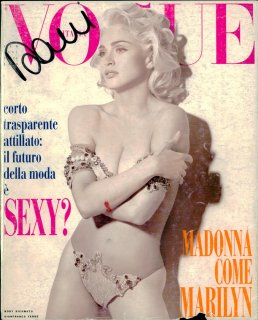
Vogue Italia Archive
And they need to change the march cover of 2005. I only see (twice) a Ferragamo ad.
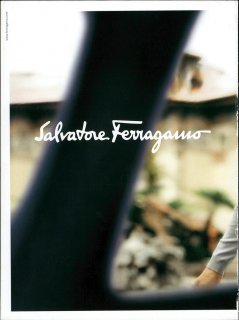
Vogue Italia Archive.
It's a very good idea to open archive, but they should offer a better quality of it.
Benn98
Well-Known Member
- Joined
- Aug 6, 2014
- Messages
- 42,532
- Reaction score
- 20,509
Not sure if anyone listened to Farneti's interview with BoF on their Apple Podcast channel, but he mentioned, or rather the interviewer mentioned that the planned issue for April is 'postponed'? So it's safe to assume it may be used for May?
As per the OP, he went on to explain again how he didn't feel it was proper to continue with business as usual and wanted to capture the moment (thereby throwing his other international colleagues under the bus.) My impression of him is that he's quite the fast talker, but not for the global Vogue brand as a whole, only for CN Italia.
As per the OP, he went on to explain again how he didn't feel it was proper to continue with business as usual and wanted to capture the moment (thereby throwing his other international colleagues under the bus.) My impression of him is that he's quite the fast talker, but not for the global Vogue brand as a whole, only for CN Italia.
ivano
Well-Known Member
- Joined
- May 30, 2016
- Messages
- 6,689
- Reaction score
- 3,968
Farnetti said it was planned a twin project with Vogue Italia and L'Uomo Vogue for the same month (remeber the crossover of the november issue of 1998 of both magazines?), so I think it will come out with one the next issues of L'Uomo (may or july).Not sure if anyone listened to Farneti's interview with BoF on their Apple Podcast channel, but he mentioned, or rather the interviewer mentioned that the planned issue for April is 'postponed'? So it's safe to assume it may be used for May?
As per the OP, he went on to explain again how he didn't feel it was proper to continue with business as usual and wanted to capture the moment (thereby throwing his other international colleagues under the bus.) My impression of him is that he's quite the fast talker, but not for the global Vogue brand as a whole, only for CN Italia.
Benn98
Well-Known Member
- Joined
- Aug 6, 2014
- Messages
- 42,532
- Reaction score
- 20,509
Farnetti said it was planned a twin project with Vogue Italia and L'Uomo Vogue for the same month (remeber the crossover of the november issue of 1998 of both magazines?), so I think it will come out with one the next issues of L'Uomo (may or july).
Thanks Ivano! I believe it will be May. Knowing how late VI goes on sale, I would think July would be far too late to still plug the looks which they've likely shot. By then everybody will be rushing towards autumn collections. Such is the pace of fashion.
Guess there is a silver lining to his 'impulsive decision' even if I don't believe for a second he deliberately planned it this way.
Similar Threads
- Replies
- 13
- Views
- 4K
Users who are viewing this thread
Total: 2 (members: 0, guests: 2)
New Posts
-
-
A Retrospective : US Harper's Bazaar under Anthony Mazzola (1972–1992) (2 Viewers)
- Latest: blueorchid
-
-




